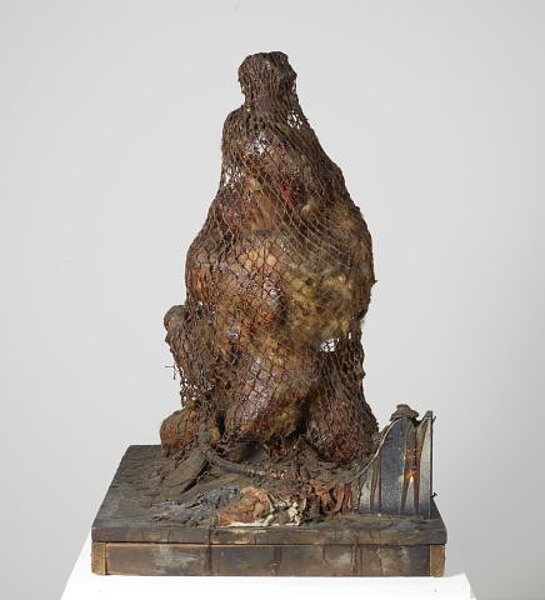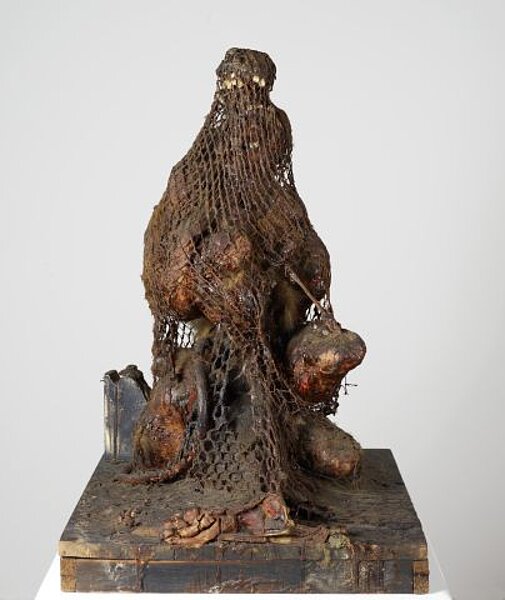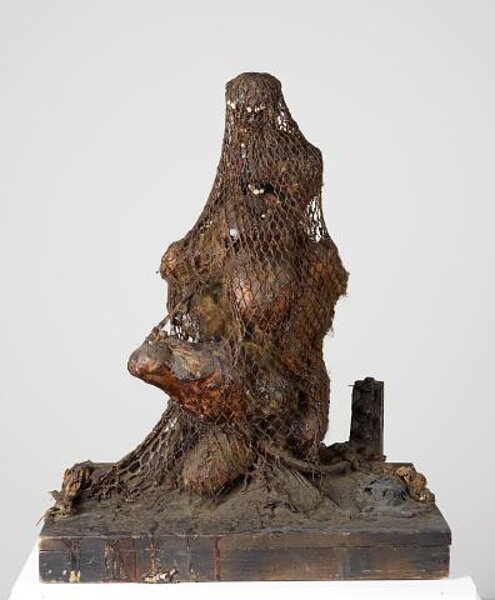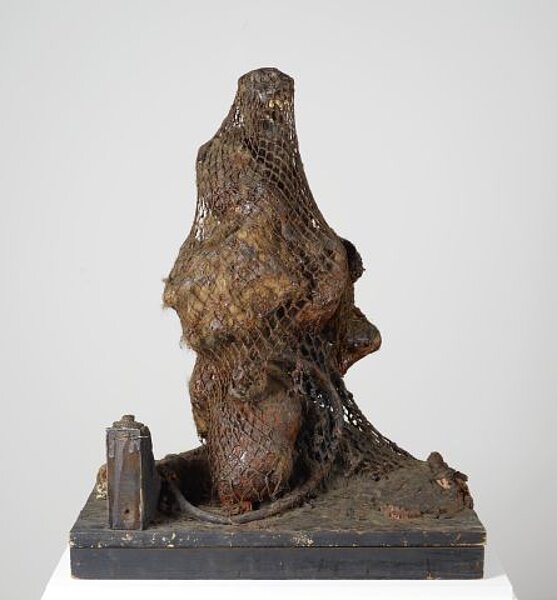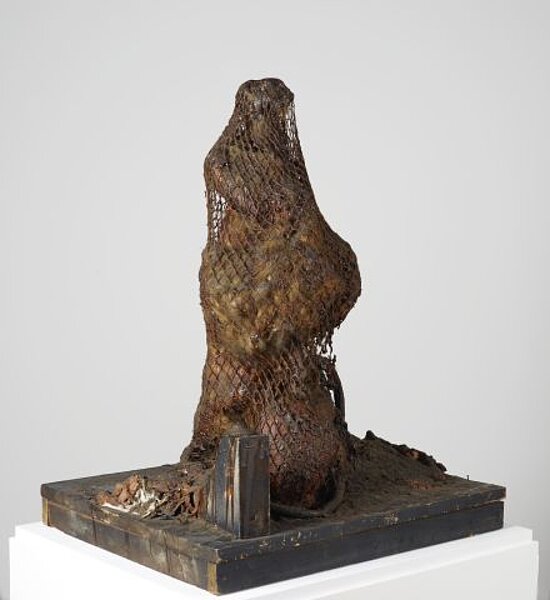
Conner, Bruce
CATCH
1964
| Object description | Various items covered with netting |
|---|---|
| Object category | sculpture |
| Material | |
| Technique | |
| Dimensions |
Objektmaß:
height: 75 cm,
width: 57 cm,
depth: 47 cm
Sockelmaß:
height: 8 cm,
width: 64,5 cm,
depth: 54,5 cm
Acrylglassturz:
height: 90,5 cm,
width: 64,5 cm,
depth: 54 cm
|
| Year of acquisition | 1978 |
| Inventory number | P 123/0 |
| Creditline | mumok - Museum moderner Kunst Stiftung Ludwig Wien, ehemals Sammlung Hahn, Köln |
| Rights reference | Bildrecht, Wien |
| Further information about the person | Conner, Bruce [GND] |
| Literature |
museum moderner kunst.SAMMLUNG HAHN 2000 BC. The Bruce Conner Story. Part II The Uncanny, by Mike Kelley, Artist |
At first view, this freestanding assemblage of 1964 entitled CATCH seems like something organic, dirty, or perhaps even decaying, something that has been caught up in a fishing net. A closer look at the shape shows that this is a human figure caught in a net, made of different materials like wax, fabrics, teeth, hair, and wood. The American artist Bruce Conner lived and worked in San Francisco for fifty years, developing his own forms of artistic expression away from the official art world. In the 1960s, the east coast of the USA, primarily New York, stood for a different kind of art—Pop art and its flirtation with the glossy sides of consumer culture. The west coast by contrast was noted for experimental, free-thinking forms of art, such as the work of the Beat generation, with whom Conner was in close contact. Conner worked with various media—painting, drawing, prints, collage, assemblage, and sculpture. In the late 1950s, he was best known for his avant-garde sculptures, in which he used combinations of found materials like nylon stockings, items of furniture, broken dolls, firs, and candles. He also added collaged or painted elements to his assemblages. Conner‘s artistic approach used damaged and shabby materials to challenge conventional ideas of artistic originality and the artist’s own “craft.” Connor never ascribed any specific meaning to his assemblages. They can be seen as comments on society and the dark side of aspirations to security in modern America, on consumer society, or on violence against women.
© mumok – museum moderner kunst stiftung ludwig wien
